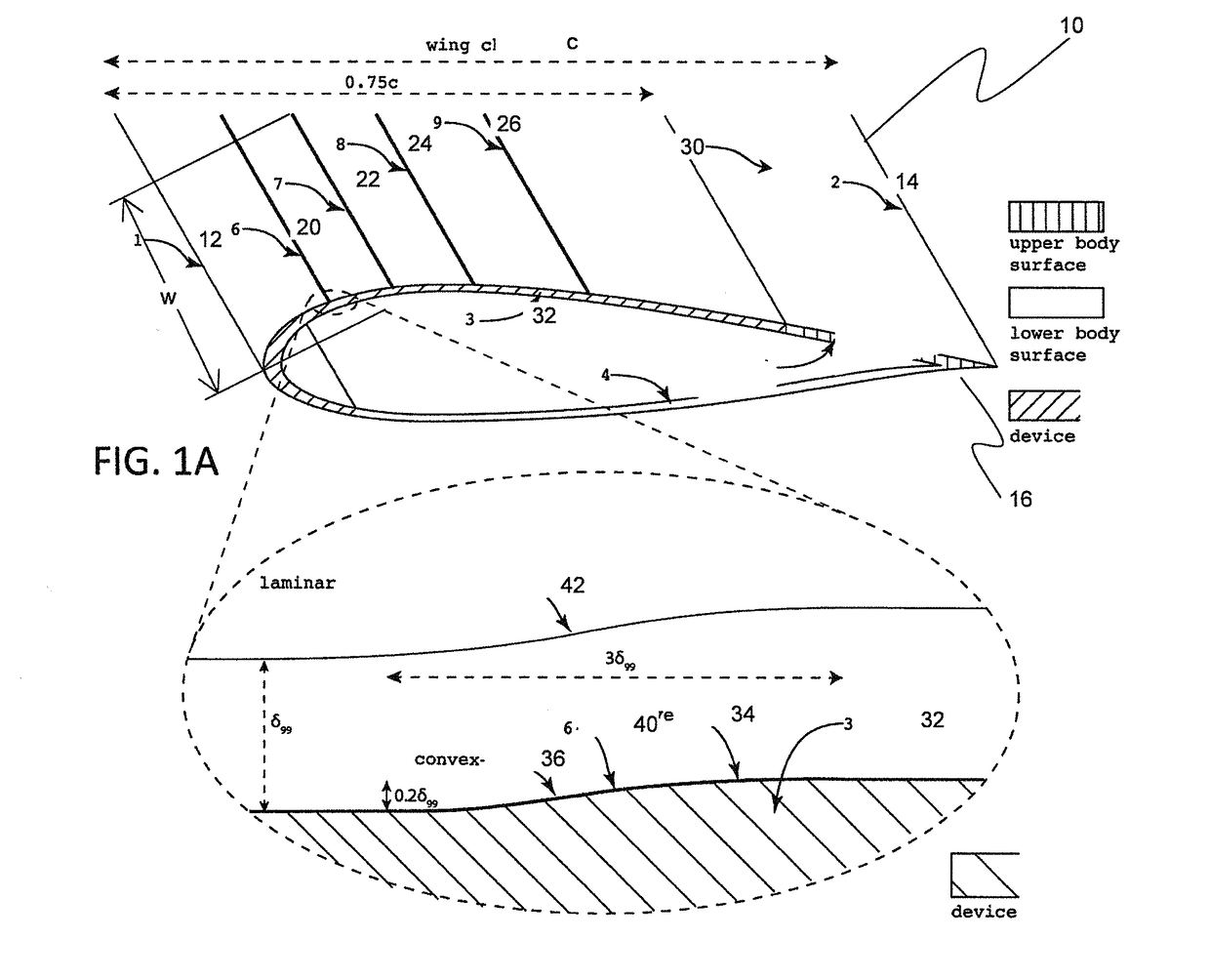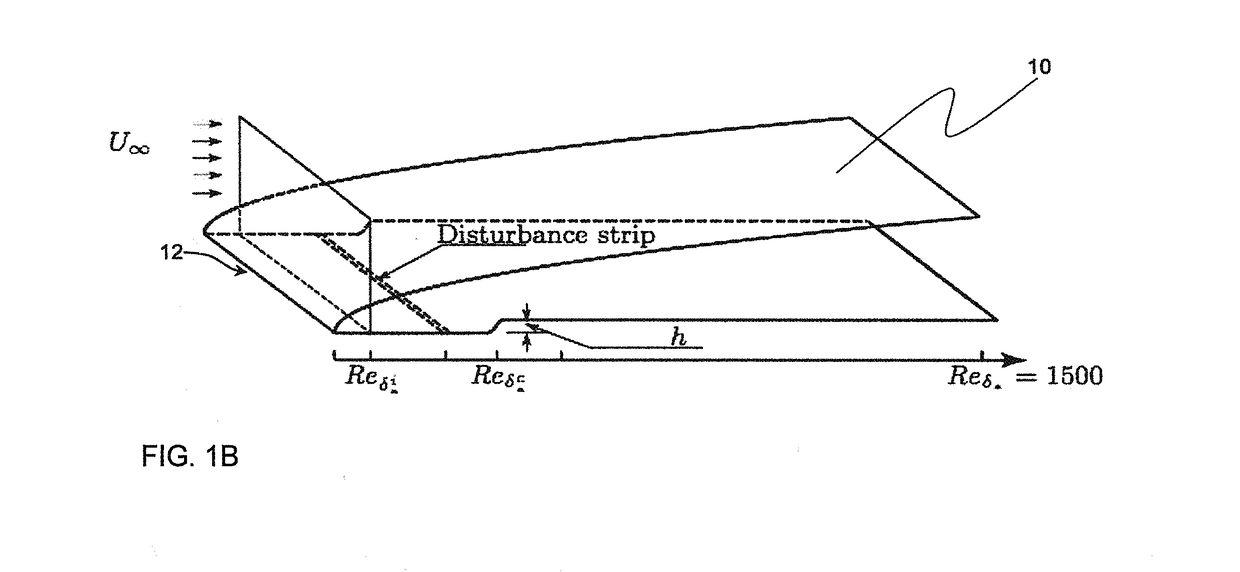Passive flow control mechanism for suppressing tollmien-schlichting waves, delaying transition to turbulence and reducing drag
a flow control and tollmien-schlichting technology, applied in the direction of airflow influencers, drag reduction, influencers by generating vortices, etc., can solve the problems of increasing energy consumption, vibration and noise, and difficulty in avoiding turbulent flow, so as to reduce drag and delay the effect of transition to turbulen
- Summary
- Abstract
- Description
- Claims
- Application Information
AI Technical Summary
Benefits of technology
Problems solved by technology
Method used
Image
Examples
Embodiment Construction
[0053]The following description is not intended to limit the scope of the invention in any way as they are exemplary in nature and serve to describe the best mode of the invention known to the inventors as of the filing date hereof. Consequently, changes may be made in the arrangement and / or function of any of the elements described in the disclosed exemplary embodiments without departing from the spirit and scope of the invention.
[0054]Those skilled in the art will appreciate that elements in the figures are illustrated for simplicity and clarity and have not necessarily been drawn to scale. For example, dimensions may be exaggerated relative to other elements to help improve understanding of the invention and its embodiments. Furthermore, when the terms ‘first’, ‘second’, and the like are used herein, their use is intended for distinguishing between similar elements and not necessarily for describing a sequential or chronological order. Moreover, relative terms like ‘front’, ‘back...
PUM
 Login to View More
Login to View More Abstract
Description
Claims
Application Information
 Login to View More
Login to View More - R&D
- Intellectual Property
- Life Sciences
- Materials
- Tech Scout
- Unparalleled Data Quality
- Higher Quality Content
- 60% Fewer Hallucinations
Browse by: Latest US Patents, China's latest patents, Technical Efficacy Thesaurus, Application Domain, Technology Topic, Popular Technical Reports.
© 2025 PatSnap. All rights reserved.Legal|Privacy policy|Modern Slavery Act Transparency Statement|Sitemap|About US| Contact US: help@patsnap.com



